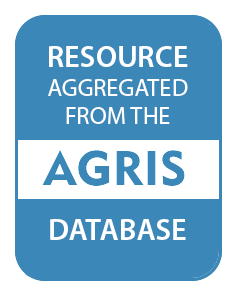The protection of fertile soils is a precondition for sustainable development. In the final document of the conference of the United Nations on sustainable development in June 2012 in Rio de Janeiro (Rio+20 Conference), the international community thus agreed to strive for a “land degradation…
Globally, there is growing demand for increased agricultural outputs. At the same time, the agricultural industry is expected to meet increasingly stringent environmental targets. Thus, there is an urgent pressure on the soil resource to deliver multiple functions simultaneously. The Functional…
In its present state, the analysis of the wood industry system in Tanimbar archipelago only covered the South part of the Yamdena island. In this part of the island, the wood industry system feeds the demand of the local villages and of Saumlaki. Among the villages of South Yamdena, two villages…
This paper compares financial returns deriving from a range of agricultural land use options in order to examine the effectiveness of agricultural land mobility policies in Ireland. Irish agriculture is characterised by a lack of land mobility despite a number of policy initiatives designed to…
The Dublin SURGE (Soil Urban Geochemistry) Project is Dublin’s first baseline survey of heavy metals and persistent organic pollutants in topsoils and is part of a Europe-wide initiative to map urban geochemical baselines in ten cities. 1,058 samples were collected as part of a stratified random…
Ireland provides a unique setting for the study of past climates, as its climate is dominated by westerly airflow from the North Atlantic and readily responsive to changes in North Atlantic circulation patterns. Although there has been substantial research on Ireland’s past environments,…
In the last decade, the increased interest in bioenergy production has led to the need for improved crop residue management. Crop residues have historically been used for many other purposes: to sustain healthy soils for food production, as feed and bedding for livestock, and as raw material for…
Taxonomy and classification of the Salicaceae are addressed in an authoritative manner, with descriptions of all important individual species, but recognizing the differences in philosophy that still exist in these topics. Natural ecosystems are described. Genetic resources of poplars and…
Using a nationally representative survey of 263 farm operators in Ireland, this study develops a typology of private forest landowners' objectives for forest ownership. It is important to understand farmers' forest ownership objectives as this will enhance economic analysis in general…
Population growth, urbanisation and climate change represent significant pressures on urban water resources, requiring water managers to consider a wider array of management options that account for economic, social and environmental factors. The Dynamic Urban Water Simulation Model (DUWSiM)…



